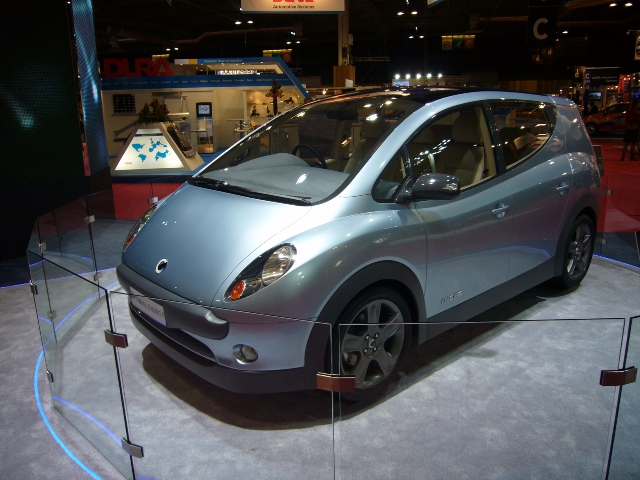[imagesource:wikicommons]
South Africa was on the verge of becoming one of the first countries to mass-produce passenger electric cars (EVs), but thanks to excessively high sales objectives and another botched government-funded research endeavour, Tesla beat us to the punch.
Joule, a four-door multi-purpose vehicle developed by Optimal Energy showed great promise in making South Africa the world leader in the production of EVs.
Seeing e-mobility as the solution to rising fuel prices and taxes, Kobus Meiring, Mike Lomberg, Jian Swiegers, and Gerhard Swart co-founded Optimal Energy in 2005 already, with the prototype showcased at the Paris Motor Show in October 2008, and the Geneva Motor Show in 2010.
At the time, the only competitor on the market was Nissan’s Leaf – Tesla only began production of its first EV, the two-door Roadster sports car, that same year, and it would be four years before they began mass-producing their first four-door.
Former Joule engineer Nicol Louw estimates that at one point 100 people were working for the company at one point, including 40-50 engineers. Louw reckons these were some of our brightest engineers – some were involved in the development of Denel’s Rooivalk attack helicopter and the South African Large Telescope. Even the prototype was designed by South African-born Keith Helfet, best known for his works on the Jaguar XJ220 and F-type concept.
The Joule prototype was powered by a single motor on the front axle, providing 70kW/250Nm. It could accelerate from 0-60km/h in about five seconds and 0-100km/h in 12-14 seconds., and had a top speed of 135km/h.
Optimal Energy expected the Joule production model to have a range of roughly 300km on a single charge, but the prototype achieved a more realistic range of about 220 kilometres. The Joule’s energy efficiency was literally miles ahead, at 6.1 km/kWh against 3.3 km/kWh. The battery’s charging speed using a standard connection was also sufficient to recharge it overnight.
Joule’s marketing and sales model was also different from other carmakers with the idea being to sell the cars from stores in malls and have them delivered to people’s homes. Louw explained the initial plan was to make about 10-20 cars a year and have the government buy them to be driven by officials.
However, the success of the Paris Motor Show in 2008 convinced the company to ramp up its production to 50,000 models per year. With an R1 million price tag to produce one car, the scaling up would have required a massive cash injection – from the initial R15 million the government plus R45 million private investment, to R9 billion. The mass production would have allowed the company to produce a car for R 300 000, and the target was set to launch the first cars in 2012.
The government however bailed out on the deal after deciding the project would not succeed.
“They basically said if this was a commercially viable project, Optimal Energy should be able to get funding for it from elsewhere,” Louw explained. The government was then still reeling from the wasted R6 billion Eskom had spent on its pebble-bed modular reactor (PBMR) research.
“I think the government just couldn’t stomach another loss.”
Optimal Energy was left with no choice but to approach other car manufacturers for funding, including Jaguar and Land Rover – with little success. With their funding drying up and the talented team being unable to operate with less and less money, the project stalled.
Optimal Energy closed in 2012, two years after the Nissan Leaf was publicly released and the same year Tesla began manufacturing the Model S. Both cars were substantially more expensive than the Joule would have been.
“The jump to 50,000 cars per year was simply too ambitious for Joule when considering the overall demand for EVs. The original crawl-walk-run strategy would turn into run-fall-crawl”.
“Looking back, it is always easier to criticise. Back then, it looked like we were guns blazing.” Louw says, “If we stuck to the small number of vehicles, I think that it could have worked with a small hand-built plant.”
The four Joule prototypes are currently at the Nelson Mandela Metropolitan University and used for research projects.
We were so close.
[source:mybroadband]





